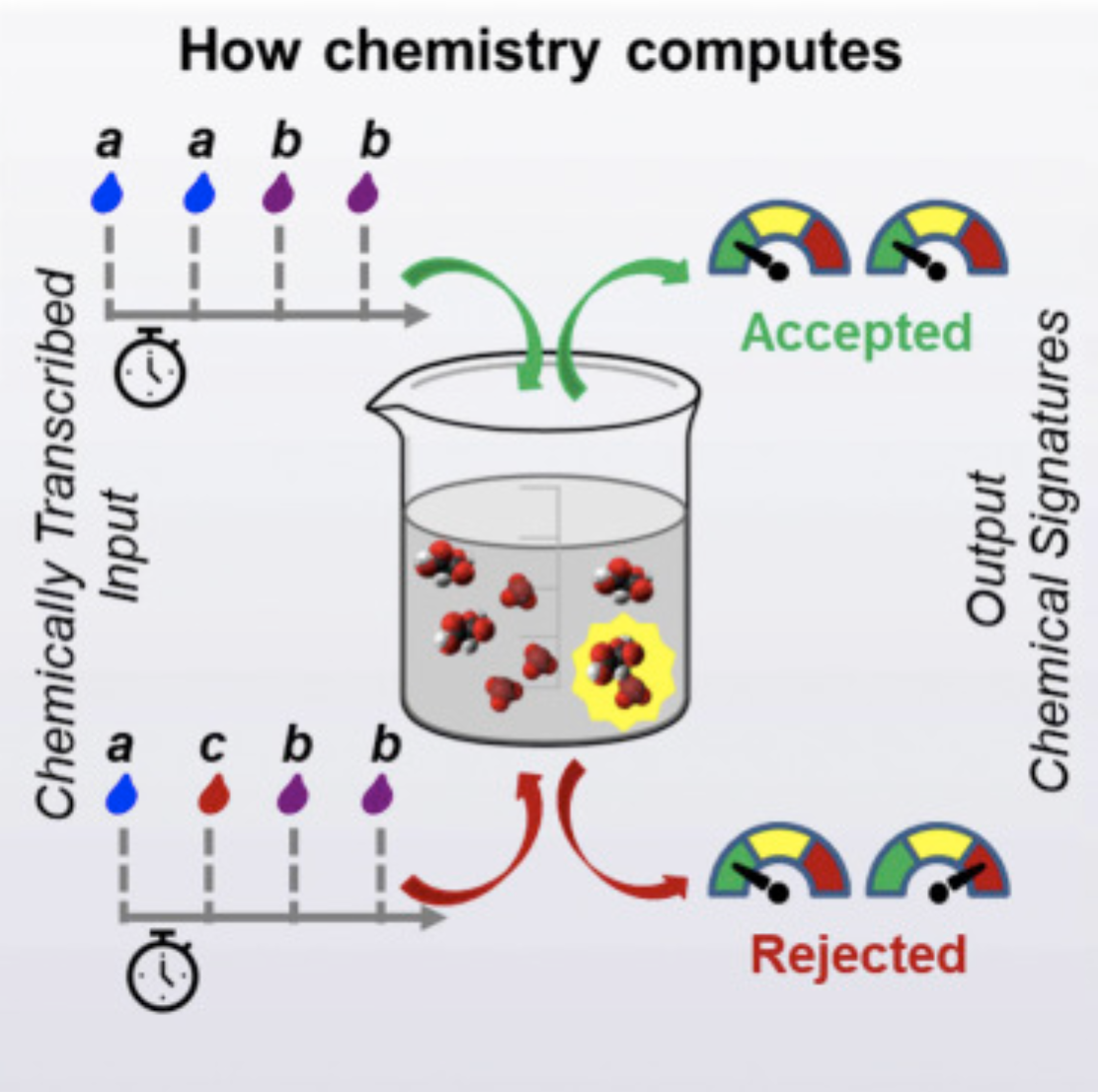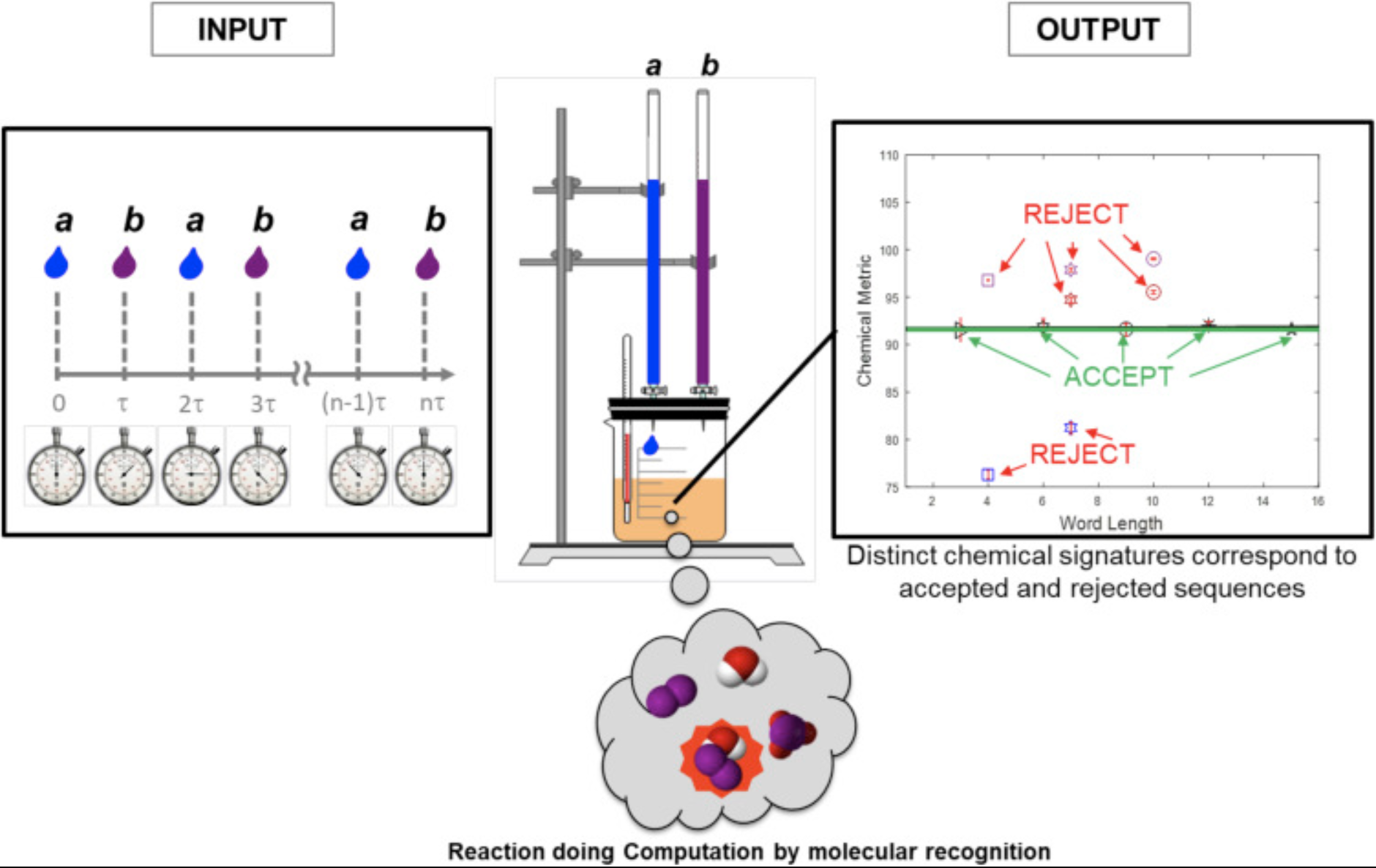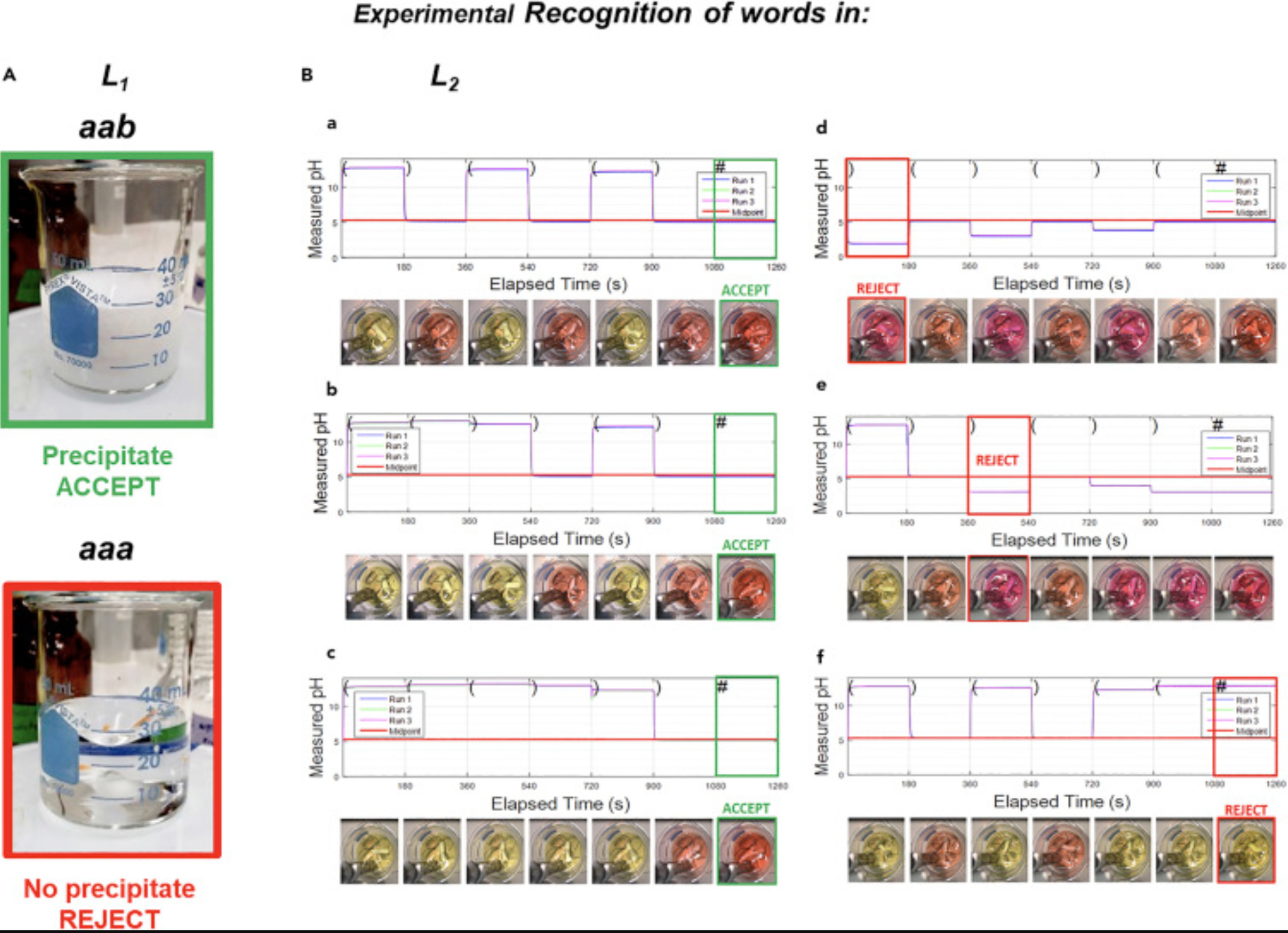Scientists Have Created the First ‘Chemical Turing Machine’
Credit to Author: Mordechai Rorvig| Date: Tue, 07 Jan 2020 13:33:44 +0000
The researcher Juan Pérez-Mercader at Harvard University is a big fan of birds, their beautiful plumage, the way that they fly. But when humans wanted to make things that fly, he points out, they didn’t make birds, they made airplanes.
Pérez-Mercader wants to do for biological cells what the Wright brothers did for birds. He wants to create chemical systems that can mimic the properties of bacterial life, without solving the tricky problem of how to create life itself.
One key characteristic of life is the way that it handles information and does its own kind of computing deep inside cells. Now, Pérez-Mercader and his colleague Marta Dueñas-Díez have shown how nonliving chemical systems can also compute. They have created the first example of a vat that computes—a chemical Turing machine.
A Turing machine is a mathematical model that formalizes what we mean when we talk about a general-purpose computer. The Turing machine model gives precision to our intuitions about what a computer can do and how it works. It reads a sequence of symbols as input, one by one, to produce a corresponding sequence of outputs.

The input symbols make up an alphabet which can be put together to form a language, which represents information. “An ordinary computer deals with information in electronic form,” Pérez-Mercader said. “This computer deals with information in chemical form.”
The starting composition of the chemical Turing machine is a simple beaker of distilled water with a few ingredients to control things like the initial acidity and pH. Like the mathematical Turing machine, it works by inputting words from a language.
The molecular machinery of life uses its own kind of language, stored in the base pairs of DNA and RNA strands, reading the information off with a tiny machine called a ribosome. DNA and RNA tell your cells, for example, what your eye color should be.
No one knows how the complex biomolecules of life like DNA and RNA came into being. The early planet was made up of dead, inert, and much simpler chemicals which do not spontaneously combine to make life.
“The million dollar question is how did life emerge. We want to understand how chemical mixtures turned into mixtures that have biological properties,” said Betul Kacar, a professor at the University of Arizona who does research on the origins of life. “If we are to understand the transition from chemical systems to biotic systems, we need to think about the commonalities that make this transition.”
Pérez-Mercader thinks that the first life might have used naturally occurring chemical computers as a stepping stone. They turn out to be fairly simple to make, requiring chemical ingredients that are neither exotic nor precious.
To implement their Turing machine, the researchers needed a chemical language. They based their chemical language on an existing Turing machine model of language called L3, made up of the letters ‘a,’ ‘b,’ and ‘c.’ Words in this language are composed specifically of equal combinations of letters, put together in alphabetical order, such as ‘abc’ or ‘aabbcc.’

With this abstract language, a Turing machine can be programmed to solve complex problems. However, to act as a valid computer, it must recognize improper combinations of letters as invalid words. In this example, ‘acb’ would be invalid because it’s not in alphabetical order, and ‘aabc’ would be invalid because it doesn’t have an equal number of the letters ‘a’, ‘b’, and ‘c’. A key result in computing states that as long as a computer can differentiate between valid and invalid words, then it can also solve more general problems.
The researchers identified two different chemicals, bromate and malonic acid, with the machine language symbols ‘a’ and ‘b.’ They identified the third symbol ‘c’ with sodium hydroxide, which changes the pH of the solution.
The first two ingredients when mixed together cause an unusual chemical reaction known as a Belousov–Zhabotinsky reaction, which causes the concentration of hydrogen ions in the beaker to oscillate back and forth. The frequency and magnitude of this oscillation depend on the order and amount of the chemical inputs.
The researchers found that their vat exhibited recognizably different behaviors for words that belonged to the L3 language. Feeding invalid words into the vat caused the vat to fail to oscillate, or else caused distinctive oscillations from those caused by the set of valid words. In other words, the vat could discriminate between valid and invalid words, proving that it fulfilled the requirements of a Turing machine.
“The machine that you have there is solving an algorithm. And the algorithm consists in seeing a sequence of letters and being able to tell whether the letters are in the language L3,” Pérez-Mercader said. Solving this simplistic algorithm proves the ability of the machine to solve more complex algorithms.
One issue with the researchers’ Turing machine is that it can only handle words of a short-enough length. As the number of letters increases, the reaction produces carbon dioxide that interferes with the measurement of the oscillations, the computational output.
“Their solutions are very prone to noise in the system,” said Barbara Bryant, a senior director at Constellation Pharmaceuticals, who has shown how biological complexes called chromatin can implement Turing machines. “One of the advantages of our silicon-based computers, as well as the information processing machinery in living cells, is the relative robustness to noise.”

Other liquid and chemical computers have long been known and used to solve simple problems, like solving specific equations or figuring out the solutions to mazes. This is the first chemical computer to demonstrate its formal correspondence with a Turing machine, showing that it could in principle perform much more complex calculations.
The benefit of a chemical computer over a silicon computer is that it could naturally interact and interface with a chemical system. Whereas a silicon computer takes electric signals as inputs and outputs, a chemical computer transacts in chemical inputs and outputs.
In 2017, Pérez-Mercader’s team designed vesicles that trap the oscillating BZ chemistry inside and use the BZ reaction to divide and replicate, almost like a biological system. The vesicles could now be designed to use the computing ability of the BZ reaction to produce selective chemical outputs in response to external inputs, exerting control on their environment. This is a hallmark feature of cells, which process inputs like drug molecules to produce controllable outputs.
But the greatest outcome of the chemical Turing machine is in its proof of the power of chemistry. “If you want to do very high-level computation, as seems to be required for life, you do not need biochemistry,” Pérez-Mercader said.
One day, perhaps, he will look on cells in the same way that he looks at birds: beautiful, natural, and vastly outperformed by cell-like machines.
This article originally appeared on VICE US.